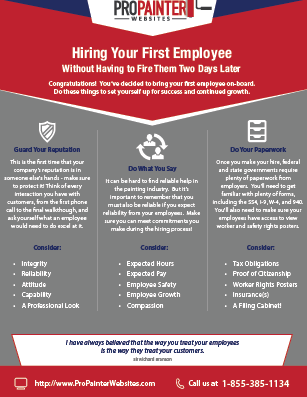When you're intending a commercial outside painting job, seasonal factors can make or damage your outcomes. You'll want to think about exactly how temperature level and moisture effect paint application and drying times. Picking the appropriate period can ensure your paint sticks properly and lasts longer. However which you can look here are truly the most effective for this kind of work? Let's check out the key elements that can impact your job's success.
The Influence of Temperature Level on Paint Application
When you're intending an industrial outside painting project, the temperature can considerably affect exactly how well the paint adheres and dries out.
Ideally, you wish to paint when temperature levels range in between 50 ° F and 85 ° F. If it's too chilly, the paint might not heal properly, resulting in issues like peeling off or fracturing.
On the flip side, if it's also hot, the paint can dry out also promptly, stopping proper adhesion and resulting in an unequal finish.
You ought to also take into consideration the time of day; morning or late afternoon offers cooler temperature levels, which can be extra positive.
Constantly examine the maker's recommendations for the particular paint you're using, as they frequently provide advice on the excellent temperature level range for optimum results.
Humidity and Its Effect on Drying Times
Temperature level isn't the only ecological variable that affects your commercial external painting project; humidity plays a considerable role too. High moisture degrees can slow down drying times substantially, influencing the general quality of your paint work.
When the air is saturated with moisture, the paint takes longer to cure, which can lead to problems like inadequate bond and a greater threat of mildew growth. If you're repainting on an especially moist day, be gotten ready for extensive delay times between coats.
It's important to keep track of regional weather and plan accordingly. Ideally, aim for moisture levels in between 40% and 70% for ideal drying out.
Keeping these factors in mind ensures your job stays on track and supplies an enduring coating.
Best Seasons for Commercial Outside Paint Projects
What's the best time of year for your commercial outside painting jobs?
Springtime and early autumn are commonly your best options. During these periods, temperature levels are mild, and moisture degrees are frequently reduced, creating optimal problems for paint application and drying.
painting walls and ceilings same colour , which can create paint to completely dry also swiftly, resulting in poor adhesion and surface. Likewise, https://smalljobpaintersnearme08753.actoblog.com/35040880/choosing-the-very-best-home-painters-unveiling-the-secrets-to-an-eye-catching-home-revamp can hinder appropriate drying out and treating, running the risk of the long life of your paint work.
Go for https://www.express.co.uk/life-style/property/1725172/how-to-paint-property-diy-painting with temperatures between 50 ° F and 85 ° F for optimum outcomes. Bear in mind to examine the local weather report for rain, as damp problems can destroy your job.
Planning around these variables ensures your paint job runs efficiently and lasts longer.
Conclusion
In conclusion, intending your commercial exterior painting jobs around seasonal factors to consider can make a substantial difference in the outcome. By scheduling job throughout the suitable temperatures and humidity degrees, you'll make sure far better bond and drying times. Remember to keep an eye on regional weather prediction and select the right time of year-- spring and early autumn are your best options. Taking these steps will certainly help you achieve a durable and specialist finish that lasts.
